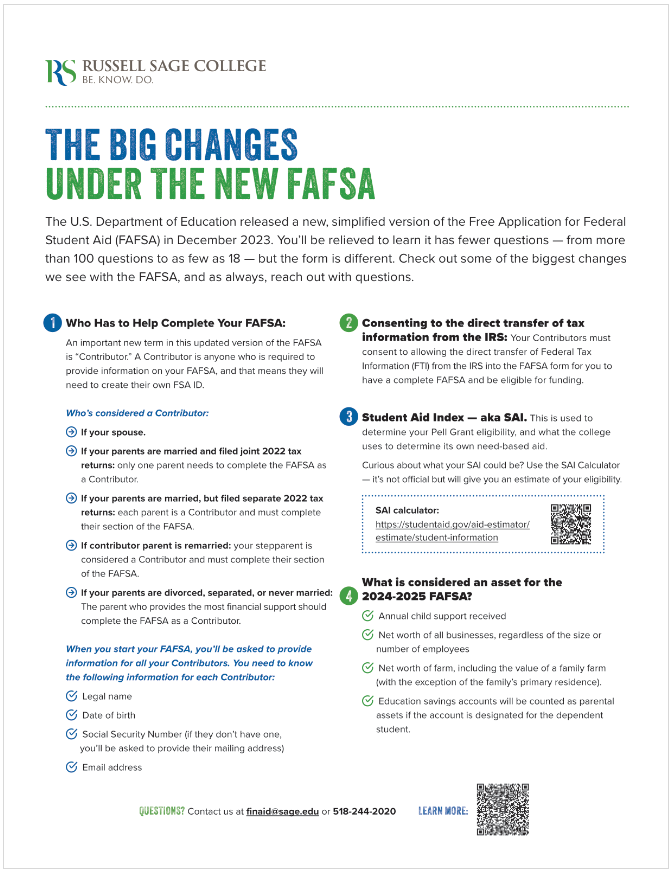
Download Your FAFSA Checklist
Get your guide to the new 2024-2025 FAFSA process.
What Are the Big Changes Under the New FAFSA?
Who Has to Help Complete Your FAFSA: A new FAFSA comes with new terms. And an important new term to know is “Contributor.” A Contributor is anyone who is required to provide info on your FAFSA, and that means they’ll also need their own FSA ID.
Anyone who is a Contributor under the new FAFSA definitions must have a FSA ID and complete their section of your FAFSA for it to be considered complete. Here’s who is considered a Contributor under the new rules:
Inviting Contributors: When you, as the student, start your FAFSA, you’ll be asked to provide information for all of your Contributors, and then your Contributors will be invited to complete their section of the form, using their FSA ID. You’ll need to know the following information for each Contributor:
Consenting to the direct transfer of tax information from the IRS: Your contributors must consent to allowing the direct transfer of Federal Tax Information (FTI) from the IRS into the FAFSA form in order for you to have a complete FAFSA and be eligible for funding. You can still self-report income, but you must first consent to the FTI transfer.
Other New lingo: Other than being shorter and simpler, some of the terms you’ve come to know and, er … love, have changed. You won’t see an Expected Family Contribution (EFC) anymore – and it was a super-confusing term anyway. Now, when you complete the FAFSA, you will see your Student Aid Index (SAI), which is used to determine your Pell Grant eligibility, and which the college uses to determine its own need-based aid awards.
SAI Calculator: Curious about what your SAI could be? How about scratching your FAFSA itch by using the SAI Calculator? It’s not official, but it will give you an estimate of your eligibility, and it’s good FAFSA practice.
What is considered an asset has changed with the 2024-2025 FAFSA. Assets now include:


